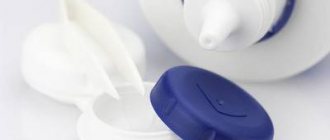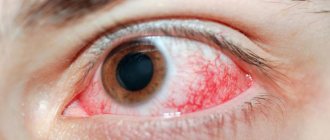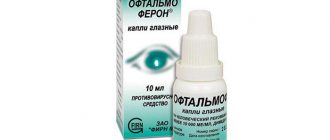Pharmacodynamics and pharmacokinetics
The active component of the drug is fluoroquinolone , an antibiotic that inhibits the activity of DNA gyrase and topoisomerase 4 . Thus, replication and recombination of bacterial DNA, their renewal and reproduction become impossible.
Due to the mutation of gram-negative bacteria, they may become resistant to this type of antibiotic. The likelihood of cross-resistance with beta-lactams , aminoglycosides and macrolides is extremely low.
Moxifloxacin is active against:
- gram-positive bacteria ( Staphylococcus aureus, Streptococcus pyogenes group A, Streptococcus pneumoniae );
- gram-negative ( Haemophilus influenzae, Escherichia coli, Haemophilus parainfluenzae, Klebsiella pneumoniae, Moraxella catarrhalis, Enterobacter cloacae );
- other atypical types of bacteria ( Chlamydia spp., Mycoplasma pneumoniae, Mycoplasma spp., Chlamydia pneumoniae ).
In laboratory studies, moxifloxacin showed activity against Streptococcus milleri, Staphylococcus saprophyticus, Streptococcus mitior, Staphylococcus epidermidis, Staphylococcus hominis, Providencia rettgeri, Enterobacter aerogenes, Enterobacter sakazaki, Enterobacter intermedius, Morganella morganii, Str. agalactiae, Streptococcus dysgalactiae, Staphylococcus saprophyticus, St. haemolyticus, Enterobacter agglomerans, Proteus mirabilis, Proteus vulgaris, Providencia stuartii .
This group also includes anaerobes : Propionibacterium spp., Bacteroides distasonis, Porphyromonas magnus, Bacteroides ovatus, Bacteroides thetaiotaornicron, Clostridium perfringens, Prevotella spp., Bacteroides fragilis, Bacteroides eggerthii, Bacteroides uniformis, Porphyromonas anaerobius, Porphy romonas asaccharolyticus .
Also in vivo, the antibiotic inhibits the vital activity of gram-negative microorganisms: Enterobacter agglomerans, Klebsiella oxytoca, Bordetella pertussis, Enterobacter Intermedius, Proteus vulgaris, Providencia rettgeri, Providencia stuartii, Enterobacter aerogenes, Proteus mirabilis, Enterobacter sakazaki, Morganella morgana, Porphyromonas spp., Fusobacterium spp .
In the treatment of diseases caused by the above pathogens, the effectiveness of the drug has not been proven. This group also includes Caxiella burnettii and Legionella pneumophila .
Moxifloxacin eye drops do not exhibit phototoxic or photogenotoxic properties, unlike other quinolone .
When used topically, the drug is absorbed into the systemic circulation to a small extent, 1000 times less than when taken orally. The half-life from blood plasma is 13 hours.
Instructions
- Marketing authorization holder: Sc Rompharm Company, Srl (Romania)
- Representative office: Rompharm Company S.r.l. (Romania)
| Release form |
| Eye drops 0.3%: dropper bottle. 5 ml 1 pc. |
Broad-spectrum antibiotic from the group of aminoglycosides for topical use in ophthalmology.
It acts bacteriostatically, blocking the 30S ribosomal subunit and disrupting protein synthesis. Highly active against coagulase-negative, coagulase-positive staphylococci and penicillin-resistant strains (including Staphylococcus epidermidis, Staphylococcus aureus), some types of streptococci (including beta-hemolytic strains from group A, some non-hemolytic strains, Streptococcus pneumoniae ), Pseudomonas aeruginosa, indole-positive and indole-negative Proteus spp. (including Proteus mirabilis, Proteus vulgaris), Escherichia coli, Klebsiella pneumoniae, Haemophilias influenzae, Haemophilus aegyptius, Enterobacter aerogenes, Moraxella lacunata, Morganella morganii, Acinetobacter calcoaceticus, Neisseria spp. (including Neisseria gonorrhoeae).
Some gentamicin-resistant strains remain highly sensitive to tobramycin.
Not effective against most strains of group D streptococci.
Tobramycin penetrates well through the BBB. Systemic absorption when instilled into the conjunctival sac is negligible.
When instilled into the conjunctival sac, aminoglycosides are found in therapeutic concentrations in the corneal stroma, anterior chamber fluid, and vitreous within 6 hours. Aminoglycosides are not metabolized and are excreted by the kidneys.
— prevention of postoperative infectious complications in ophthalmology.
The drug should be applied topically, 1 drop every 4 hours.
For acute infections, instillation can be repeated every 30 minutes or 1 hour.
In case of a mild infectious process, the drug is instilled 1-2 drops into the conjunctival sac of the affected eye (or eyes) every 4 hours.
In case of acute severe infectious process (endophthalmitis), the drug is instilled into the conjunctival sac every 30-60 minutes; as inflammation decreases, the frequency of instillations is reduced.
Allergic reactions: in 15% of cases - burning, paresthesia, itching of the conjunctiva; in 1-5% of cases - hyperemia of the mucous membrane of the eye, sensation of a foreign body in the eye, lacrimation; Symptoms: punctate keratitis, erythema, increased lacrimation, itching and swelling of the eyelid.
Treatment: carry out symptomatic therapy.
With simultaneous use of Tobropt with systemic antibiotics from the group of aminoglycosides, it is possible to increase systemic side effects (including nephrotoxic, ototoxic effects, disorders of mineral metabolism and hematopoiesis).
The drug should be stored in closed original packaging out of the reach of children, in a dry place, protected from light at a temperature of 15° to 25°C. Shelf life: 3 years.
After opening the bottle, the drug should be stored for no more than 4 weeks.
Tobropt is for topical use only.
The bottle must be closed after each use. To maintain the sterility of the solution, do not touch the tip of the pipette to the eye.
Long-term use of the drug can lead to increased growth of non-susceptible microorganisms (including fungi). It is recommended to perform a culture after completion of treatment if the clinical result is unsatisfactory.
Patients wearing rigid contact lenses should use eye drops only after removing the contact lenses. Lenses can be put on 15 minutes after instillation of the drug. During the treatment period, you should not wear soft contact lenses.
If allergic reactions develop, use of the drug should be discontinued.
Shake the bottle before use.
Impact on the ability to drive vehicles and operate machinery
The use of the drug does not cause increased fatigue and visual impairment and, accordingly, does not affect the ability to drive vehicles or operate machinery. Patients who temporarily lose clarity of vision after application are not recommended to drive a car or operate complex equipment immediately after instilling the drug.
Side effects
Adverse reactions that occur when using the product are divided into local and systemic.
Local effects, in order of frequency of occurrence:
- pain and irritation on the mucous membrane of the eye;
- hyperemia of the eye or conjunctiva, dryness;
- swelling, punctate keratitis , blurred vision, erythema of the eyelid , local hemorrhages ( subconjunctival );
- erosion , opacification and defects of the cornea ;
- the appearance of deposits on the cornea, uncharacteristic discharge from the eye, endophthalmitis , sensitivity to light, blepharitis , increased pressure (intraocular).
Systemic adverse reactions:
- taste disorder, metallic or sour taste in the mouth, burning sensation;
- paresthesia , headaches , discomfort in the nasal cavity, lump in the throat, nausea and vomiting, low hemoglobin ;
- rapid heartbeat, shortness of breath, rash and itching on the skin , allergic reactions .
Very rarely possible: anaphylactic shock, collapse, Quincke's edema , fainting.
If the above reactions occur, you must inform your doctor; if an allergy occurs, stop taking the drug.
Cheap analogues
For each drug, there are cheaper analogues that have similar effects. Before using them, you should consult your doctor. The use of antibacterial drugs is contraindicated for viral and fungal diseases.
Maxiflox
Antibacterial eye drops. Used when bacterial conjunctivitis occurs.
Contraindications:
- viral conjunctivitis;
- drug-resistant bacteria;
- pregnancy, breastfeeding;
- the appearance of local allergic reactions in the form of itching, burning, peeling, redness, swelling of the skin around the eyes.
The drug is instilled into the eyes 3 times a day for no more than 7 days. If it does not work, it is replaced with analogues.
The price in pharmacies is 150-170 rubles.
Tsiprolet
Ophthalmic drops with antibacterial action. Used to treat bacterial infections of the eyes, eyelids, and middle ear. Contraindicated for viral and fungal diseases, as they can lead to bacterial resistance to the drug.
They stop the action of bacteria by affecting their DNA. Reduce their ability to reproduce.
Contraindications Tsiprolet:
- pregnancy, breastfeeding;
- children under 1 year of age;
- allergic reactions to the components of the drug.
The price in pharmacies is 60-70 rubles.
Vigamox eye drops, instructions (method and dosage)
ophthalmic only .
According to the instructions for use of Vigamox, one drop is prescribed into the affected eye, up to 3 times a day. As a rule, the patient’s condition improves after 5 days of taking the drug, but treatment should be continued for another 2-3 days.
If there is no improvement within 5 days of taking the drug, you should consult a specialist. For children older than one year, in patients with renal failure and liver disease, no dosage adjustment is required.
Composition and use of the drug Vitabakta
Vitabact drops are produced in France.
The basis of the drug is the active substance – picloxidine dihydrochloride.
When applied topically, it is practically not absorbed through the mucous membrane of the eye and has no general effect on the body.
The product is a powerful antiseptic. It has proven its effectiveness against pathogenic coccal flora. It is successfully used for viral and fungal infections, E. coli and chlamydia.
Based on this, indications for the use of Vitabact ophthalmic drops:
Medicine for the restoration of cartilage tissue Teraflex and its analogues.
- bacterial eye infection;
- dacryocystitis of newborns;
- prevention in the postoperative period.
If you follow the instructions for use, the drug combines well with other medications.
It has practically no side effects; the only absolute contraindication is individual intolerance.
Approved for use in newborn infants. During pregnancy, these drops are used strictly under medical supervision, since long-term studies have not been conducted in this area.
The drug does not affect human psychomotor function, but reduces the clarity of visual perception
Therefore, car enthusiasts and people working with precision mechanisms must be careful.
The average price in Russian pharmacies is 350 rubles.
Vitabact does not have structural analogues (drugs with the same active ingredient, but a different name). But there are medicinal substances that are similar in their effect on pathogenic flora. In many cases, the result from their use is similar to Vitobact, although the analogues are cheaper.
Interaction
The interaction of this dosage form with other drugs has not been studied.
However, according to data on the interaction of the antibiotic in other forms of release, it can be combined with warfarin, probenecid, theophylline, digoxin, glibenclamide, rinitidine, contraceptives (oral) , drugs in the metabolism of which the P450 .
Combine with caution with cisapride, neuroleptics, erythromycin, quinidine, sotalol, procainamide .
The cheapest means
The drug has cheaper analogues produced domestically and abroad. They have practically no differences, but some experts believe that the quality of purification of raw materials in them is slightly lower.
Erythromycin
Erythromycin - tablets for oral administration containing 250 mg of the active substance. It is used in otorhinolaryngology, pulmonology, venereology and dermatology.
General information about the drug
The medicine is prescribed to children over 3 years of age. The dosage is calculated taking into account the age and body weight of the patient. The therapeutic course can last from 5 days to 2 weeks.
Ormax
Ormax – capsules with azithromycin 250 mg per piece. The drug is taken 1 capsule per day. Take the medicine with a small amount of liquid. The duration of the therapeutic course is from 3 days to 1-2 weeks.
Azimed
Azimed – capsules with azithromycin, 250 mg of active ingredient per piece. The drug is taken once a day on an empty stomach. For pathologies of the ENT organs, the initial dosage is 1 capsule per day. The dose may be doubled depending on the patient's therapeutic response to treatment.
Erythema migrans
Erythema migrans is treated with increased dosages of the drug - 3 g per day (4 tablets three times a day). The treatment regimen has its own characteristics, so it is important to consult a dermatologist before starting therapy. For the treatment of sexually transmitted pathologies, Azimed is prescribed in the amount of 4 capsules once a day. In this case, the drug is taken once.
AzitRus
AzitRus – tablets and capsules for oral administration. The tablet form contains 250 mg of azithromycin per piece, the capsule form contains 500 mg of the active substance. For children, the medicine is available in the form of an oral suspension.
It is advisable to prescribe this medication not only for the indications given in the descriptions of previous generics of classic Azithromycin, but it is also effective in combating pathologies of the stomach and duodenum caused by the bacterium Helicobacter pylori. The medicine can be used in the treatment of scarlet fever, as well as in diagnosing the initial stage of borreliosis - Lyme disease.
Release form of the drug AzitRus
According to the instructions, the medicine is taken once a day. The dosage is calculated individually. Taking AzitRus will be unsafe if the patient has renal or liver failure or is individually intolerant to at least one of the components of the tablets/capsules/suspension. There are also some age and weight restrictions.
Thus, the tablet form of AzitRus is not prescribed to children under 12 years of age or weighing less than 50 kg. Capsules should not be used by children under 3 years of age or children weighing less than 25 kg. A contraindication for taking AzitRus oral suspension is children under six months of age.
Vigamox price
The price of Vigamox eye drops is approximately 205 rubles per 5 ml bottle.
- Online pharmacies in RussiaRussia
- Online pharmacies in UkraineUkraine
- Online pharmacies in KazakhstanKazakhstan
ZdravCity
- Vigamox eye drops 0.5% 5ml Alkon-Kuvrev n.v.
RUB 195 order
Pharmacy Dialogue
- Vigamox (vial-dropper 0.5% 5ml)Alcon
RUB 222 order
show more
Pharmacy24
- Vigamox 5 ml eye drops Alcon-Cuvrior, Belgium
145 UAH.order
PaniPharmacy
- Vigamox liquid Vigamox h/c 0.5% vial-drop. 5ml Belgium, Alcon-Couvreur
161 UAH order
show more
Korneregel
Korneregel is used for the treatment of patients with erosive damage to the cornea, keratitis, dry keratoconjunctivitis, and dystrophic diseases of the cornea. The drug is prescribed to patients with corneal burns of various etiologies (including thermal and chemical burns). Korneregel, according to the doctor’s decision, can be prescribed in the treatment of patients with infectious diseases of the cornea (including bacterial, viral or fungal etiology) against the background of mandatory antibacterial, antifungal or antiviral therapy, respectively. The drug can be used as a therapeutic and prophylactic agent in patients who use contact lenses.
Allergodil drops
Allergodil is used for the prevention and treatment of seasonal and non-seasonal (year-round) allergic eye diseases (allergic conjunctivitis and keratitis). On the recommendation of a doctor, the drug can be used in the complex treatment of infectious keratoconjunctivitis and conjunctivitis, including viral eye infections (herpetic, chlamydial and adenoviral keratoconjunctivitis). Allergodil is also prescribed to relieve symptoms of eye irritation caused by exposure to pet hair, house dust, lint and other contact allergens. Allergodil should be used as recommended by a physician.










